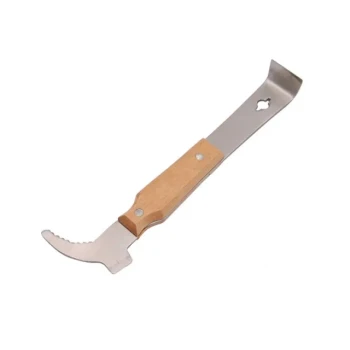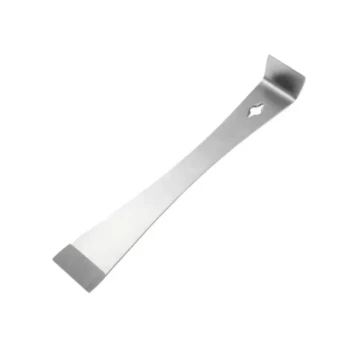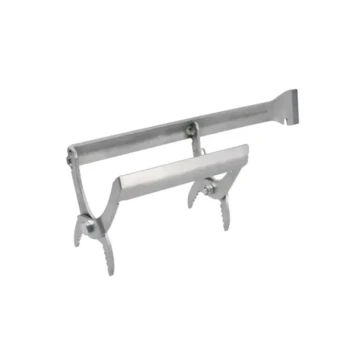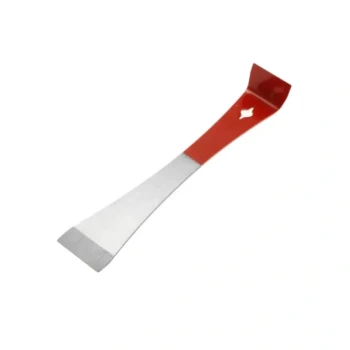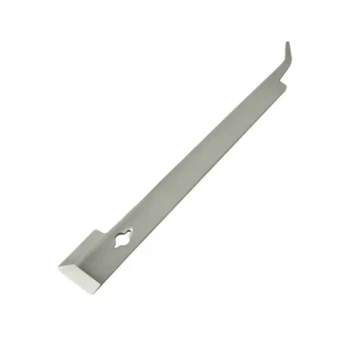To attract bees to a new hive box, you must make the box smell and feel like a desirable home. The most effective methods involve coating the inside of the box with beeswax, adding old frames with drawn comb, and using a scent lure like lemongrass oil. These elements signal to scout bees that the location is a safe, resource-rich environment, saving a new swarm immense time and energy.
Your success depends on understanding a critical distinction: are you trying to lure a wild swarm into an empty "bait hive," or are you encouraging an established colony to move into or expand into new equipment? The strategies for each are fundamentally different.
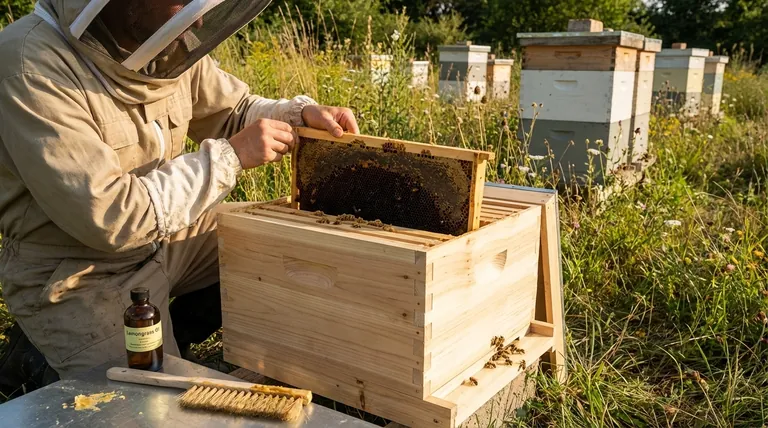
The Two Primary Scenarios for a New Hive
Your approach to populating a new hive box falls into one of two categories. You are either passively catching a wild swarm or actively managing your own bees.
Scenario 1: Attracting a Wild Swarm to a Bait Hive
A bait hive is an empty box you set up to capture a swarm of bees from a nearby colony. The goal here is to convince scout bees that your box is the perfect new home.
Leverage Scent as the Primary Lure
Bees are driven by scent. A new wooden box smells like cut lumber, not a home. You must add the smells of an established colony.
Coat the inside surfaces and entrance with melted beeswax. If you have it, rubbing propolis (a resinous material bees use as glue) near the entrance is also a powerful attractant. A few drops of lemongrass essential oil inside the hive mimics the queen's orientation pheromone and is highly effective.
Provide "Move-in Ready" Infrastructure
A swarm's first job is to build wax comb, which consumes a massive amount of energy. Giving them a head start is a powerful incentive.
Place one or two old frames with previously drawn-out comb inside the bait hive. The residual scent of wax, honey, and old brood makes the hive almost irresistible. These frames act as a powerful signal that the location has been successfully inhabited before.
Scenario 2: Moving Your Bees into a New Box
If you already have a colony, "attracting" bees to a new box is an active process of transferring them or encouraging them to expand.
Use Brood to Draw Bees Upward
When adding a new super (an extra box for honey) on top of an existing hive, bees can be hesitant to move up into the empty space.
Placing one frame of capped brood from the lower box into the center of the new super is a powerful trick. Nurse bees will not abandon the young, so they will move up into the new box to care for the brood, drawing the rest of the colony up with them.
Perform a "Split" to Create a New Colony
The most direct way to populate a new hive from an existing one is to perform a split. This involves manually moving resources.
You will transfer several frames containing bees, brood, pollen, and honey from the strong, established hive into the new hive box. You also need to ensure the new hive gets a queen, either by moving the old queen or by providing a queen cell for them to raise a new one.
Install a Purchased Bee Package or Nuc
Many beekeepers start a new hive by purchasing bees. This isn't "attracting" them, but rather installing a colony you've already acquired. A nucleus hive (nuc) comes with frames of brood and a laying queen, while a package is a box of loose bees with a caged queen.
Understanding Critical Post-Move Procedures
Once bees are in the new box, your work shifts to ensuring they stay and establish themselves successfully.
Forcing Reorientation
If you move a hive a short distance, the bees' internal GPS will guide them back to the old location. To prevent this, place an obstruction like a leafy branch in front of the new hive's entrance. This forces them to stop and perform new orientation flights, mapping the new location.
Providing Critical Initial Support
A new colony needs food to fuel the immense task of building wax comb. Feed them a 1:1 sugar water solution continuously for the first few weeks. This provides the carbohydrates they need to build their new home quickly.
Ensuring Security and Minimizing Stress
A small, new colony is vulnerable to predators and robbing from other hives. Reduce the hive entrance to a small opening (2-3 inches). This creates a defensible bottleneck that the colony's guard bees can protect.
After the move, leave the bees undisturbed for at least a week to allow them to settle. Constant inspections are stressful and can disrupt their progress.
A Common Pitfall: Misidentifying Queen Cells
When splitting a hive, you might move a frame with queen cells to the new box. It is critical to know what kind you are moving.
- Swarm Cells: These are a sign of a healthy, booming colony preparing to swarm. They are typically numerous and found along the bottom or sides of a frame. Moving these is ideal for making a split.
- Supersedure Cells: These are a sign the colony is replacing an old, failing, or dead queen. They are usually few in number and located in the middle of the frame's face. Moving these could leave your original hive queenless and unable to recover.
Making the Right Choice for Your Goal
Your strategy must match your objective. Focus on the core principles for your specific situation.
- If your primary focus is catching a wild swarm: Use an old frame of drawn comb and a scent lure like lemongrass oil in your bait hive.
- If your primary focus is expanding a strong hive: Draw bees into a new honey super by placing a single frame of brood in the center of it.
- If your primary focus is creating a second hive from your first: Perform a split by moving frames of bees, brood, and honey to the new box, ensuring the new colony has a queen or a queen cell.
Ultimately, working with bees is about understanding their instincts and using that knowledge to guide them.
Summary Table:
| Scenario | Goal | Key Attraction Method |
|---|---|---|
| Bait Hive | Catch a wild swarm | Scent lure (lemongrass oil), drawn comb frames |
| Hive Expansion | Encourage bees into a new super | Frame of brood in the new box |
| Creating a Split | Start a new colony from an existing one | Move frames of bees, brood, honey; provide a queen |
Ready to build a stronger, more productive apiary?
At HONESTBEE, we supply the high-quality beekeeping supplies and equipment that commercial apiaries and distributors rely on. Whether you're scaling up with new hive boxes or need durable equipment for splits and expansions, our wholesale-focused operations are designed to support your growth.
Let us help you succeed. Contact our expert team today to discuss your needs and get a quote.
Visual Guide
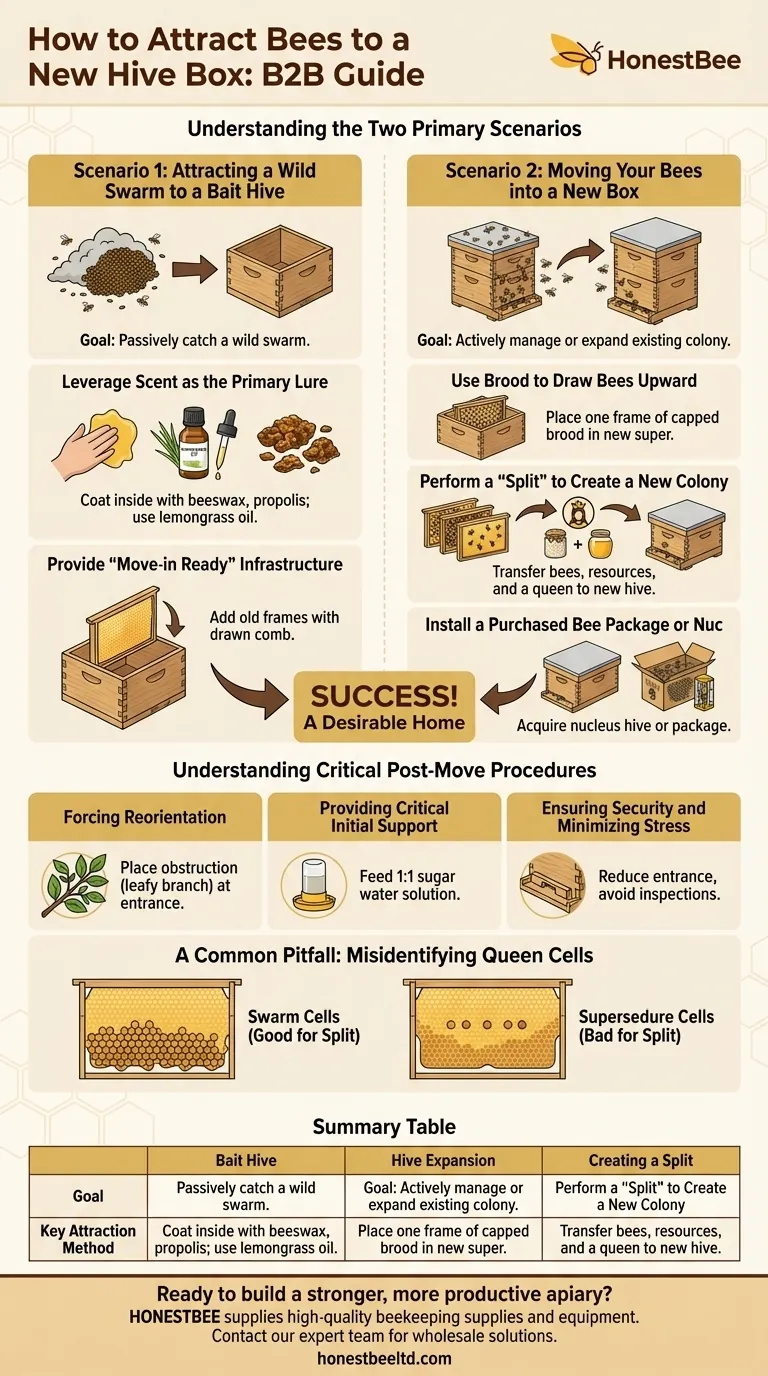
Related Products
- Langstroth Bee Hives Bee Keeping Box for Beginners Beekeeping
- Long Langstroth Style Horizontal Top Bar Hive for Wholesale
- HONESTBEE Professional Long Handled Hive Tool with Precision Cutting Blade
- HONESTBEE Professional Multi-Functional Hive Tool with Ergonomic Wood Handle
- HONESTBEE Advanced Ergonomic Stainless Steel Hive Tool for Beekeeping
People Also Ask
- What basic equipment is needed to start beekeeping? Your Essential Guide to a Confident Start
- Why were wooden hives traditionally preferred? For Natural Beekeeping Aligned with Bee Biology
- What are the different types of beehive boxes available? Choose the Right Hive for Your Apiary
- Why might a beginner be advised to start with a Langstroth hive? Unlock a Supportive Beekeeping Ecosystem
- Should a beginner try a different type of hive? Start with a Langstroth for a solid foundation.



